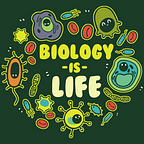Life in stages: The butterfly story
If you’re a fan of biology like Steven Rindner, you must be very fond of animals, along with the naturally occurring processes that are responsible for making them the fascinating creatures that they are. This blog details the story of the butterfly.
A female butterfly lays her eggs on a natural surface, like tree bark or the face of a leaf. An egg typically takes some time to develop, and soon enough, this reveals a baby caterpillar neatly tucked inside it. Soon enough, the baby caterpillar becomes a little more animated, and it also gets hungry.
As soon as it cracks open the egg it emerges. Next, it looks for a food source, which literally becomes the very shell it just came out from, shares Steven Rindner, a bio student. The first order of business for a caterpillar is to get as much nutrition as it can in preparation for the next phase of its life cycle. Usually, the feeding continues with a helping of fresh leaves within its immediate environment.
When it is quite ready, the caterpillar attaches its posterior end to a stable surface, like a tree branch. Here, a series of biochemical processes takes over, and the caterpillar becomes a solid and still pupa, otherwise known as a chrysalis. The processes continue, but underneath the coating of the pupa, the caterpillar changes its anatomy and turns into a butterfly, shares Steven Rindner, a bio major.
When its transformation is complete, it begins to emerge yet again. The pupa tears open, and the still crumpled wings of the butterfly become more noticeable, already with their beautiful colors. However, this may take some time to dry out and stabilize. Once they do, the butterfly is ready to flutter about and live freely in its natural environment.
